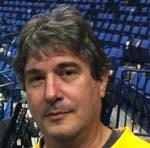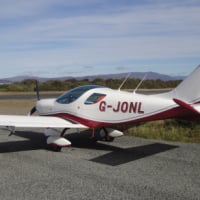Welcome to the FlexRadio Community! Please review the new Community Rules and other important new Community information on the Message Board.
Need the latest SmartSDR or 4O3A Genius Product Software?
SmartSDR v4.1.3 | SmartSDR v4.1.3 Release Notes
SmartSDR v3.10.15 | SmartSDR v3.10.15 Release Notes
The latest 4O3A Genius Product Software and Firmware
SmartSDR v4.1.3 | SmartSDR v4.1.3 Release Notes
SmartSDR v3.10.15 | SmartSDR v3.10.15 Release Notes
The latest 4O3A Genius Product Software and Firmware
If you are having a problem, please refer to the product documentation or check the Help Center for known solutions.
Need technical support from FlexRadio? It's as simple as Creating a HelpDesk ticket.
Need technical support from FlexRadio? It's as simple as Creating a HelpDesk ticket.
WNB ??
W5XZ - dan
Member ✭✭
WNB on 160 m ?
0
Answers
-
WNB in the suburbs is a joke, on top band..really?
0 -
at any gain level with a hi RDF rx antenna?? laughable performance, this QTH with s-7 line noise..
come ON y'all....
0 -
TZ4AM was on tonight...i NEED him on 160m !!!
0 -
do I HAVE to put a BPF in front of the radio, since FRS has decided i may or may not need it???
REALLY???
really, you guys, give me some control over BPF's, sometime??? i really am not a total ****....
0 -
but, oh well, you're not supposed to work a new one on160m in the summer solstice??? baLONey!!!!
0 -
I suspect you may not be completely aware of how different DSP noise mitigation processes function and the noise types they are designed to mitigate
First off, noise is a very complex waveform that is usually a mixture of correlated (coherent) and uncorrelated (random) waveforms. The different types of DSP noise mitigation techniques are designed to address either correlated or uncorrelated type noise.
A noise blanker is designed only to mitigate periodic (correlated) pulse type noise. The WNB is designed to operate on well-correlated noise that covers a wide frequency range and when properly applied it will remove the noise from the audio and the panadapter.
Noise on 160m in the summer is NOT periodic noise. It is primarily atmospheric noise caused by natural electric discharges (lightning). There are approximately 40 lightning strikes per second worldwide. The sum of all these lightning flashes results in the atmospheric noise demodulated by your receiver. This type of noise signature is highly random in nature or uncorrelated, the complete opposite of periodic noise.
So essentially, if you are using NB or WNB to mitigate atmospheric noise, you are using the wrong tool for the job.
The Noise Reduction (NR) function is designed to operate on noise signatures that are random or uncorrelated, but it is most effective if the random noise has some periodic characteristics. Remember, noise is a mixture of coherent and random waveforms.
For atmospheric noise on 160m, I find that the NR is only minimally effective due to the noise type and the NB is usually completely ineffective, and this is to be expected based on how these noise mitigation algorithms work. Also, note that using noise mitigation when there isn't noise for the DSP algorithms to operate on can have adverse effects as well, in a similar fashion to using the wrong noise mitigation technique for the noise you are experiencing.
However, there is a saving grace. That is the dual attack AGC. When properly set, it will amplify the signal more than the noise which improves the signal to noise ratio (SNR), which is essentially what all noise mitigation techniques try to do. It should also be noted, that having the AGC set properly will maximize the effectiveness of NR, NB and WNB.
All of this is explained in the SmartSDR Software User's Guide, Chapter 11.
http://www.flexradio.com/downloads/smartsdr-software-users-guide-pdf/
And, as an FYI a bandpass filter will not improve the atmospheric noise situation. However, you do have control over the preslectors by using a single panadapter that encompasses just the band of interest (preslector on) or widening it out or defining a new panadapter in a different band (preselector off)5 -
That was put very well Tim.
Last month there was a storm that went across the US. I had Lightningmaps.org up and running and noticed there were over 200 srikes per minute just in the mid west.
One thing I've noticed is during high static caused by storms, I occasionally get a little bit better noise mitigation if I turn on the NB and run the scroll bar all the way to the right. This sort of defies logic, but it does seem to help just a bit. I haven't tried this since upgrading to v1.10 though.
0 -
One thing I've noticed is during high static caused by storms, I occasionally get a little bit better noise mitigation if I turn on the NB and run the scroll bar all the way to the right. This sort of defies logic, but it does seem to help just a bit.
Not really. Noise especially atmospheric noise is a complex combination of correlated and uncorrelated waveforms. In this case, a combination of NB and NR used in small amounts can work together in a complementary fashion to provide some level of relief.0 -
I've done this too and it does help. Good to point out again WNB will remove the noise from the audio and the panadapter where NB will remove the noise from the audio but not the panadapter. I'm bookmarking your post Tim so to refer to it when I'm asked by wood-bee Flexers about WNB and NB.0
-
Great response Tim. I find the WNB particularly effective with power line noise on 6m. It's quite impressive to turn it on, wait for a couple of seconds while the 6500 thinks about it and... gone!
I'm curious as to why WNB is also applied to the panadapter but other noise management techniques are not.
0 -
John. It has to do with the way the different functions work.
The regular Noise Blanker (NB) processes just what is in the receive slice itself and does it based upon the contents of the receive slice.
The Wideband Noise Blanker (WNB) processes a much wider bandwidth of information and does it before the information is sent to the Panadapter/waterfall processing routine, or the slice receivers. Thus it affects what is displayed across the entire panadapter/waterfall.
For wideband correlated (regularly pulsing) noise, processing a wider bandwidth can often help detect the correlation more effectively, and thus, improve the blanking. (Up to a point. See below for additional WNB comments)
Every receive slice in that panadapter is also affected by the WNB. The WNB level control is actually on the panadapter menu, even though it is also replicated in the Slice DSP pull-down menu. If you will notice, you can have two or more slices open on a single panadapter, but if you adjust the WNB control in any of the slices on that pan, the adjustment changes on all of the slices in that pan.
But if you adjust the control on a slice in a different pan, the control on slices in other pans are not affected.
(Additional WNB Observations: I have noticed that if there is a very strong, correlated noise source in the WNB "window" that is NOT wide bandwidth, that it can throw the WNB routine off. i.e. a severely overdriven AM broadcast station outside the 40 or 20 meter ham band will throw off spikes that are detected by the WNB routine and cause "Pumping" in the noise floor of the panadapter. It requires turning the WNB level down, but unfortunately that reduces its effectiveness on the noise I WANT to remove. think of it as similar to your regular noise blanker being overdriven by a nearby spattering SSB signal.)
As far as NR - There may be no added benefit from sampling random noise from a wider bandwidth. So NR (Noise Reduction) currently samples noise from within the individual slice. I am speculating here, because this is not my major field of expertise. So Steve, Eric, and the others at FRS can enlighten us on potential advantages of a wider sampling bandwidth on random noise reduction. (I actually would love to be wrong here, indicating that FRS still has some tricks up its sleeves!)
BTW... As others have said, I also have had some success with careful adjustment of WNB, NB, and NR levels while running them at the same time. But they do seem to interact somewhat because they each change what the other is processing, so it is like fine-tuning a high-performance race car. But the MOST important setting during the whole process is the AGC-T. I have that control on my FlexControl Knob, and am constantly tweaking it while adjusting filtering, WNB, NB, and especially NR & APF (Audio Peak Filter for CW.
Ken - NM9P1
Leave a Comment
Categories
- All Categories
- 378 Community Topics
- 2.1K New Ideas
- 630 The Flea Market
- 8.2K Software
- 118 SmartSDR+
- 6.4K SmartSDR for Windows
- 183 SmartSDR for Maestro and M models
- 430 SmartSDR for Mac
- 271 SmartSDR for iOS
- 258 SmartSDR CAT
- 192 DAX
- 382 SmartSDR API
- 9.3K Radios and Accessories
- 38 Aurora
- 256 FLEX-8000 Signature Series
- 7.2K FLEX-6000 Signature Series
- 947 Maestro
- 56 FlexControl
- 865 FLEX Series (Legacy) Radios
- 924 Genius Products
- 463 Power Genius XL Amplifier
- 336 Tuner Genius XL
- 125 Antenna Genius
- 297 Shack Infrastructure
- 209 Networking
- 460 Remote Operation (SmartLink)
- 144 Contesting
- 787 Peripherals & Station Integration
- 139 Amateur Radio Interests
- 1K Third-Party Software


